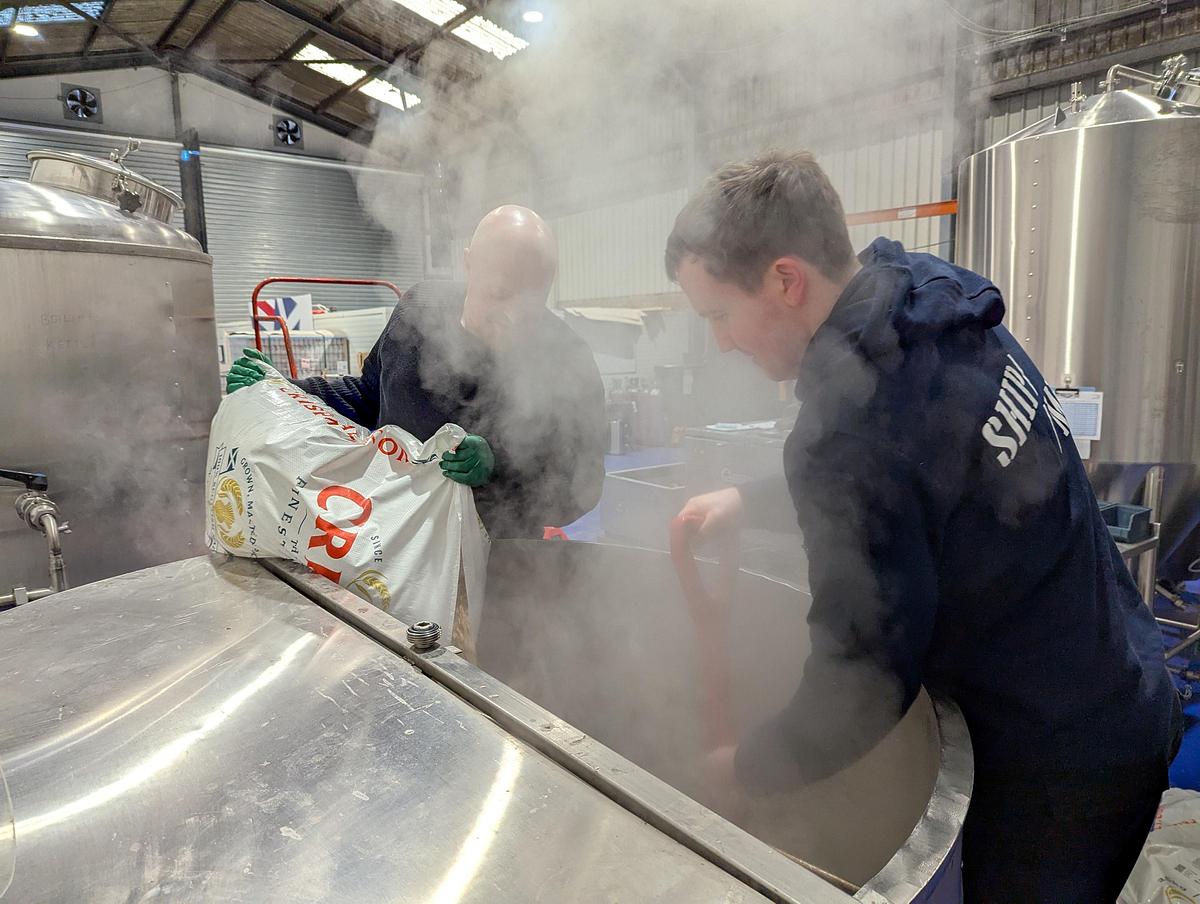Alcohol-free brewer sets sail on net zero journey
Jump Ship Brewing is Scotland’s only dedicated alcohol-free brewery. Founded in 2019 by Sonja Mitchell, today they have a team of six staff and brew eight different beers.
In early 2024, Jump Ship opened their own brewery in Midlothian. They chose a site with solar panels and a biomass boiler, fuelled from a sustainable wood supply 15 miles away. The rest of the power for their all-electric equipment comes from the grid.
But with a 25% rise in electricity costs looming once their fixed tariff ended, they had a strong incentive to use energy as efficiently as possible. Sonja joined Climate Springboard in September 2024. The team has since doubled down on energy monitoring, operational efficiency and preventing product losses.
“The Climate Springboard programme has helped get us started and understand the impact we’re already having, so as we make investments and improve our carbon impact, we can also see the business impact and payback.” Sonja Mitchel
Energy monitoring
Jump Ship Brewing are now conducting daily energy-use monitoring, to understand how much energy is used at each stage of the brewing process.
Initially, some team members were reluctant to introduce more steps to the daily routine. So, Sonja worked closely with their Head Brewer to create a short, streamlined process that fit in around other checks. She also explained why they were collecting the information. “Once people understood that it would help the business make the best decisions to move towards net zero, they were happy to be involved.”
They intend to use this information to keep finding ways to save energy – starting with heat.
Heat is a large part of any brewery’s energy use. But heating and cooling is even more important for Jump Ship, as finding the right temperature is how the brewers control the fermentation process to prevent the beer from becoming alcoholic.

Finding the sweet spot
To start work on time each morning, their water needs to be at the right temperature by 8am. Previously, the brewers were switching on the water heater the evening before, likely wasting energy for five to six hours each night. Now, they have installed an automated heating system that switches on remotely.
“All of that energy is being used exactly as we need to,” says Sonja. “We’re not wasting anything.”
On the flip side, the finished beer must be kept cold. Letting it get too warm reduces the quality and makes it difficult to can.
This point was underscored during the heatwaves in July and September 2024. Jump Ship’s brewers noticed that although the beer cooler was set to 2 degrees, the product inside was warmer and consuming extra energy to reach the desired temperature.
After taking a step back, they realised that parts of the tank weren’t insulated – therefore likely being warmed up by the surrounding air. As a simple fix, they bought some insulating material, cut it to size and fitted it around the exposed tank and pipes.
Thanks to a few quick wins, Sonja reports that the team are more productive during the working day. Operations are running more efficiently, meanwhile they are seeing fewer product losses.
Top tips from Jump Ship Brewing
- 👁️ Pause and take the time to look around. You’ll likely find some quick energy efficiency wins that will save you time and money in the future.
- 🎯 Be clear about what you want to achieve. Then, embed it as a fundamental principle in your business; this helps when you’re faced with a challenging situation.
- 🧩 Break your net zero goal down into small pieces. Setting clear boundaries has given us the momentum and confidence to make the bigger changes when we’re ready.
Learn more
- https://jumpship.beer/
- Why BrewDog is winding down its ‘carbon negative’ claim - A lesson in the importance of reducing your own emissions and the pitfalls of relying on offsets
Feeling inspired?
We invite you to sign up for Climate Springboard, a free business support programme by Edinburgh Climate Change Institute. It’s designed to equip SMEs in Scotland with the knowledge and tools to start out on their journey to net zero.
It lasts just over a month and is completely free. At the end, attendees leave with a company carbon footprint, a template for a long-term net-zero strategy, and a tailored list of quick ways to lower emissions and costs.